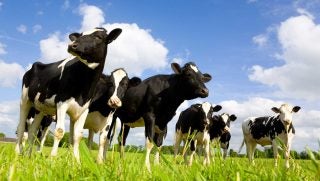In fall 2021, a few Past National FFA Officers (PNOs) were tagged in a Facebook post made by a member of the National FFA Organization. The post read:
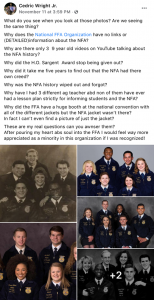
Each of us PNOs who identified as African, African American, and/or Black and had active Facebook accounts were tagged in this post, as was the National FFA Organization. The post was made by a member named Cedric Wright Jr., passionately advocating to the National FFA Organization by asking why detailed information about the New Farmers of America (NFA) isn’t shared widely with folks involved in the National FFA Organization.
The New Farmers of America was a national agriculture leadership organization for African American youth. The purpose of the organization was to promote and encourage leadership from young African American students in the areas of character, thrift, scholarship, cooperation, and citizenship. In 1965, the NFA was merged with the National FFA Organization as a way to unify Black and White youth in agriculture.
Looking back at this post, I find myself reflecting on the photos and what we as members, supporters, agriculture educators, and past members of the National FFA Organization have allowed these photos to mean.
In my eyes, these photos and the BIPOC folks (Black, Indigenous, and People of Color) in them have come to mean “Black history of the National FFA Organization.”
The folks in these photos are incredibly influential and definitely a huge part of the FFA’s growing Black history. I don’t intend to diminish our influence and work at all. But we must remind ourselves that Black history in the FFA didn’t begin with any of us Black National FFA Officers — just as Black history didn’t begin when slaves arrived in the states. Yet these photos and the stories of the people in them are currently the only information supporters, ag teachers, and members have to access and expose them to FFA’s Black history.
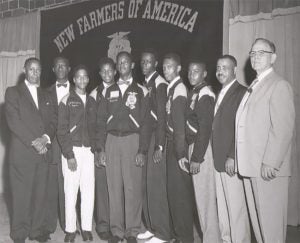
We can’t negate who we left out of FFA Black history that many of folks in these photos were informed and/or empowered by. And we often do not share this history widely with emerging Black FFA members — those same emerging Black FFA members who could potentially feel and become more connected to National FFA if they did get the chance to hear and see their cultural history in the FFA. Unfortunately, a lack of clear access to FFA’s Black history and NFA has caused a disconnect for our emerging members of color to the National FFA Organization.
Based on conversations I have had, I’ve seen and heard many BIPOC and Caucasian members, ag teachers, and supporters asking the same questions Wright and I have asked. We would like to hear more about NFA, an organization that BIPOC folks once identified so passionately with.
So, that should be addressed right here … today: Why don’t we discuss New Farmers of America (NFA) in the National FFA Organization? And where can we find more information about the history of the NFA to share with others?”
Why don’t we discuss NFA in FFA?
This is a complex question, with an even more complex answer. Further than a simple mention of the organization in our FFA history PowerPoints or the one quiz bowl question we memorized for a state contest, I don’t believe it is purposeful that the current National FFA Organization doesn’t speak about the NFA.
The simplification of this organization’s history is tied to the Civil Rights Movement of the time, where many mergers or “absorptions” of predominately Black organizations to predominately White organizations had taken place. This was all over the U.S., not just FFA. These absorptions of Black organizations were due to the federal government pushing for immediate and swift integration of Black folks into social structures they were once segregated from.
However, were organizations like FFA truly ready and had a structure in place to ensure Black students were welcome and truly celebrated after integrating?
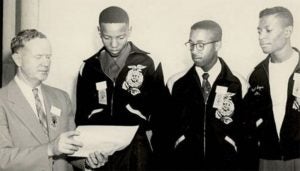
Many cordial interactions have been documented, like the one below between the FFA and NFA, cited from Gary Moore’s Friday Footnote, The ‘Merger’ of the FFA and NFA, to give a powdered and seamless face to the integration:
National FFA President Kenneth Kennedy to the last New Farmers of America President, Adolphus Pinson, during the merging ceremony in Kansas City, Missouri, during the 1965 National FFA Convention:
“FFA PRESIDENT KENNEDY: Adolphus, this jacket, along with the other NFA symbols, so nicely presented, will occupy a prominent place in the FFA Archives at the National FFA Building. This beautiful three-story building is located on what was once part of George Washington’s Estate and is owned by the FFA. We are proud of it and want all FFA members to know it is open to them to visit and enjoy.
“However, there was another part upon which we agreed and that was for the FFA to give you a FFA Jacket for your NFA Jacket. The exchanging of this NFA Jacket for the FFA Jacket by you, the last NFA President, symbolizes the joining together all students of vocational agriculture into one great organization. We must all work together to develop occupational competency, agricultural leadership, cooperation and citizenship.”
The two presidents then walked to the edge of the stage and shook hands. This ceremony concluded the joining of the two groups.
Wait?
NFA’s symbols, jacket, and organizational history is the one to get put in the archives? NFA is the one to switch to the FFA jacket? There wasn’t a combination of both jackets? A brainstorming of how members’ activities, norms, and values from both organizations could come together?
This interaction above between the FFA and NFA’s presidents were one of many for thousands of NFA members at the time, and they are referred to as “adaptations” — adaptations meaning that rather than two organizations coming together to discuss how they will move together with each’s values, many students of color were asked to “adapt” or morph to the predominately White organizations expectations and values.
So then, back to the question at hand. Why don’t we discuss NFA in FFA?
NFA is not discussed in FFA as much as it should be because the NFA, whether intentionally or unintentionally by the National FFA Organization, wasn’t given the opportunity for counsel in the National FFA’s Organizational leadership boards, which would have ensured that NFA members would have representation as the merger was being processed and implemented. And, FFA had no accountability in place to ensure that local chapters and state associations would cooperate with the integration of NFA to FFA.
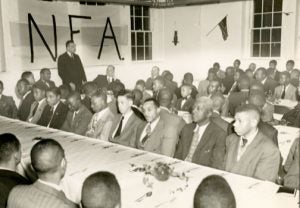
In 1965, prior to the merger that July, NFA leadership met with National FFA leadership to discuss the merger. At the meeting, the NFA made several requests to ensure there was counsel from Black leadership on the National FFA Board of Directors and a permanent Black civil service position in the federal government in agriculture education. This was requested intentionally so that after the merger was complete, National FFA and NFA/Black leadership could work together and create plans for continued cooperation between Black and White students, advisors, and supporters and meet each where they are during the changes of integration.
The recommendations were referred to the FFA governing committee, all White males. And the NFA’s requests were not followed up. With no one to share the experiences of NFA in the newly integrated leadership who were Black and in NFA, the National FFA Organization went on with business as usual. While NFA history was left to fade in the FFA archives. Furthermore, there was no system advised by the national level to ensure that the state and local levels of FFA and NFA upheld the FFA and NFA merger. Dozens of FFA and NFA chapters at the local level refused or had difficulty merging with one another, leading to further disdain of White and Black members.
Where can we find more information to share about NFA with others?
Knowing now the history, it is obvious that the current National FFA Organization isn’t to blame for the absorption and, ultimately, the silence around NFA history. However, they aren’t off the hook.
Today, there is not an aggregated place on the National FFA Organization’s website where we can find clearly spelled out information or resources on NFA. There is a student handbook that shares a box file of dozens of class resources on FFA history and a timeline that includes a few significant dates in NFA history. However, there’s no deep-diving history or clear location of where to find resources for agriculture educators to share with their students about NFA.
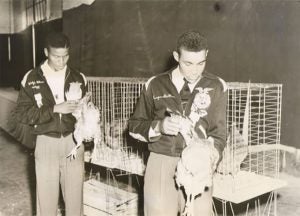
After doing some of my own sleuthing, I have located the following sources for information about the NFA, if anyone was interested in further exploring the NFA’s history and possibly share it with others:
History resources on NFA
The Friday Footnote
Published by Gary E. Moore
Contact: gmoore@ncsu.edu
New Farmers of America Records 1929-1965
Published by Ruth Lily Special Collections Archive
A Historical Narrative on the Impact of the New Farmers of America (NFA) on Selected Past Members
Published by Dexter. B. Wakefield & B. Allen Talbert
Exploring the Past of the New Farmers of America (NFA): The Merger with the FFA
Published by Dexter B. Wakefield & B. Allen Talbert
Educational resources and advocacy ideas
NAAE Communities of Practice: The New Farmers of America
Published by NAAE & Gary E. Moore
Resources Include: Worksheet Question and Answer Ideas, Teaching Ideas, Videos, Links to information.
North Carolina FFA Association: History of the New Farmers of America
Resources Include: NC NFA State Officer, NFA Manual, Convention Proceedings, NFA Creed, NFA Emblem, NFA Constitution and Bylaws, NC NFA Activities, and more.
Remembering and Preserving the History of the New Farmers of America
Published by RFDTV
Resources Include: Advocacy and Research Ideas
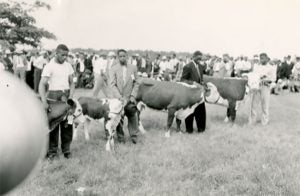
Now more than ever, its increasingly important that we learn it and then share our NFA history. And it is increasingly more important to be inspired by our collective and vast NFA history in order for us to create change in the narrative of Black student involvement in FFA. We must allow our emerging Black students and members the opportunity to see that they have always belonged in FFA. To see an organization whose Ag teachers, supporters, and past members know its history and is eager to share it with them.
My hope is for one day, by being more aware of NFA’s history, students like Cedric can grow even closer to the National FFA Organization. I hope it is because they were able to see themselves in our past and become encouraged to push to a more equitable and inclusive future, together.
UPDATE: A month after this AGDAILY column was published, the National FFA Organization released a blog post titled Recapturing a Lost Culture, exploring the organization’s relationship with the New Farmers of America and the experiences of some of those members.
Bre Holbert is a past National FFA President and studies agriculture science and education at California State-Chico. “Two ears to listen is better than one mouth to speak. Two ears allow us to affirm more people, rather than letting our mouth loose to damage people’s story by speaking on behalf of others.”


